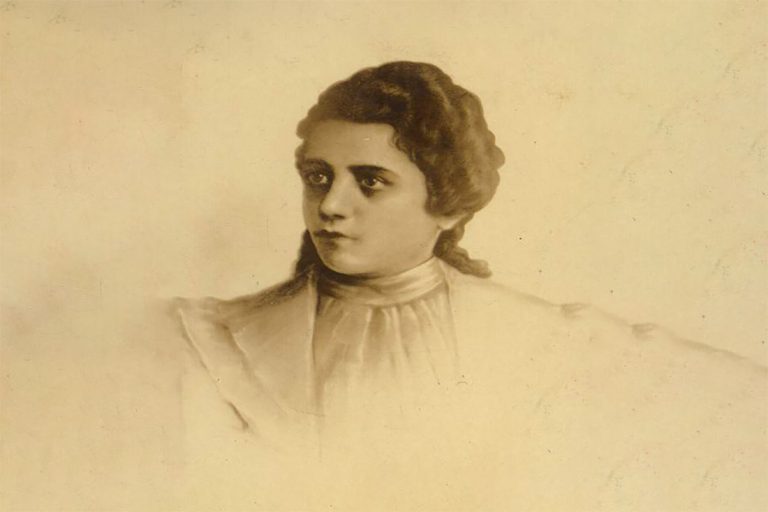An article in Bohemia magazine from 1970, in Number 22, contains the fascinating story of a young woman who, defying the rigors of the time, became news and faced the repression of the Spanish government. Not only to ask for freedom, but also to accuse the sexual abuses to which the young inhabitants of the Isla de Pinos were victims.
To my delight and surprise, the girl was a daughter of Puerto Príncipe and she contributed much to the freedom and transformations of the Homeland in her last two libertarian struggles, since she lived 98 years to continue fighting.
Captain Evangelina de las Mercedes Cosío y de Cisneros, keeps a beautiful story that mixes fearlessness and fantasy, garnishes that transformed her into a woman of interest to the international press in 1896.
Who was Evangelina?
We can summarize her life in that of a participant in the frustrated independence uprising of Isla de Pinos, in July 1896 and then she was released from prison in Havana in October 1897, the preparation for her escape was triggered by the cunning and courage of the 19-year-old girl, to escape from her Spanish oppressors.
But let’s take a look at her origins. We know that she was the daughter of Don Agustín Cosío Serrano, she was born in Puerto Príncipe on September 23rd, 1877.
It has been written that her father was a veteran of the 1868 Revolution in the first moments, as he was accused of an impudent and deported to the island for 10 years with her daughters Evangelina and Carmen, who were left motherless since they were little.
On the island
On July 26th, 1896, Evangelina Cosío Cisneros led a daring uprising on Isla de Pinos, in which deported young revolutionaries and local enthusiasts put their lives in danger to join Maceo’s troops. They chose the date of the Santa Ana festival, when supposedly the soldiers would not be quartered but were celebrating in the streets.
To that attempt at national liberation, Evangelina added her own feminist claim to personal freedom, in terms of sexual harassment: she publicly rejected the hitting of the commander of the square, and organized a trap for him in his own house.
The group consisted of poorly armed men and they failed. Twenty-one of them were sent to the fortress of La Cabaña, together with Evangelina’s father, while she was shipped to the Real Casa de San Juan Nepomuceno de Recogidas turn into a women’s prison. According to legend, she immediately began to knit, waiting for her deportation.
The news
That was the headline that the American press was waiting for to confront Spain and the New York Journal correspondents, with much imagination, prepared a new story of the atrocities committed in Cuba, which were to be hated and avenged by the American people.
Thus a secret rescue was organized for Evangelina, who, young and beautiful, won the admiration of the young bank manager Carbonell, who supported the escape and later became his wife, already safe in New York.
Karl Decker, a reporter in Washington, was then sent by Hearst to Havana to rescue Evangelina, the little Cuban Joan of Arc from prison.
As a result of a complicated plan, in which US diplomatic personnel accredited to Cuba were involved, on the night of October 7th, 1897, the escape took place.
The rescue
They secretly provided her with rasps, so that the young woman could cut the balusters of the room near the terrace, over there, outwitting the guards, they rescued her and hid her in Carbonell’s house, then dressed as a man and with a passport under the name of Juan, boarded a steamer bound for the United States, where she was received with honor.
The Journal was, little by little, releasing the details of the leak. Always eager to proclaim itself a paradigm of “journalism that takes action”.
When the legend faded, she married in 1898. With the establishment of the Republic, she finally returned to Cuba and settled with Carbonell in Havana. She became widowed in 1916 and two years later she remarried to the lawyer Miguel Romero and they had children.
She always supported the justice movements that were born in the following years and she supported the deed of ’59.
She died in the city of Havana, on May 22nd, 1970, at the age of 98. The captain, as she was called since the war of 95, was buried with military honors. The duel was in charge of Captain Antonio Núñez Jiménez.
End of page
After reviewing these pages and the glorious history of a woman from Camaguey surrounded by myths and values, I think we have dusted off Evangelina Cosío, the Cuban Joan of Arc.
Translated by: Aileen Álvarez García






